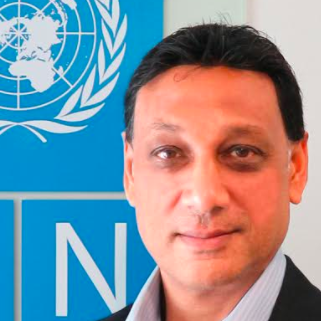

When India placed its entire population of 1.3 billion under lockdown, it took them merely a week to make payments to 204 million people. At roughly the same time, the Philippines began pushing out COVID-19-related payments to 18 million beneficiaries. A few months on, nearly 2 million are waiting for their money with 600 of the 1,008 LGUs still in the process of making payments. (READ: 5 million more families 'waitlisted' for emergency subsidy program)
The fundamental difference between the two countries is the existence of fully digitized social safety net programs with 3 foundational elements: government-issued digital IDs to prove citizens are who they say they are; financial accounts for beneficiaries to receive money; and widespread use of mobile phones (not only smart phones) with easy access to payments. India pressed a computer key to make the payments, while the Philippines walked a bag full of cash door to door.
The contrast is particularly ironic as the Philippines was one of the region’s early movers in digital payments. The rate of these payments has increased significantly, jumping from 1% of total monthly transactions 5 years ago to 10% today. Regulatory and legislative barriers to digitization have mostly been removed. The introduction of PESONet and InstaPay enables fund transfers between accounts. Quick Response (QR) codes allow "point and pay." The National Payments Systems Act provides the necessary legislation. The Data Privacy Act, if effectively implemented, addresses concerns about the use of data to monitor individuals. Mobile money operators like GCash and Paymaya continue to increase their customer base and refine their product offerings. A National ID system is theoretically ready for roll out.
But very little of this is currently benefiting the poor. To speed up social transfers and ensure financial inclusion of the poorest, a concerted and collaborative effort is urgently required. Key stakeholders need to cooperate closely to establish an integrated ecosystem that builds on the technology, and the legal and regulatory enabling environment already available. (READ: Rappler Talk: Ex-DSWD chief Dinky Soliman on assessing the emergency subsidy program)
Civil society and education institutions can help by providing financial and digital literacy training to those receiving payments using a core curriculum to build understanding and trust in digital transactions. Telcos can ensure the connectivity of remote areas and make data downloads for use of digital payment applications affordable. Mobile money operators can reduce fees and charges and improve the user experience for poor beneficiaries and small and micro enterprises. The chambers of commerce can work with these merchants to promote acceptance of digital transactions and encourage the use of QR codes and provision of cash out facilities. Government agencies – national and local – can deliver on BSP’s digital financial inclusion ambitions by prioritizing a rapid shift to digital payments, not only to beneficiaries, but also to their own staff. The highest levels of government can insist on the transparency and cost-efficiency that is possible through digital payments.
A digital transition at scale and speed is achievable. Two decades ago, China was basically a cash economy. They are now at the point where their Central Bank forbids discrimination against cash by merchants. The take-up across Chinese society – even among low income earners – has been remarkable. Tech giants Alibaba and Tencent have driven the change, boosting their customer base from zero to 100 million in 5 years. They now have 700 million unique users. $5.5 trillion of payments have been made through QR codes. What they have done, and we need to learn from, is that beyond legislation, regulation, and technology, they created a compelling value proposition by quickly deepening the payment ecosystem. They reduced on-boarding and transaction frictions by making enrolment easy, kept fees low, addressed connectivity issues, and leveraged loyalty rewards. (READ: DSWD partners with DICT for automated emergency subsidies)
The case for going fully digital at speed is clear. It will dramatically cut down on inefficiencies, facilitate e-commerce and contact-less transactions, and reduce leakage. Most importantly, it will quickly provide formal financial services to the two out of 3 Filipinos that are unbanked and provide the Philippines with the means to reach most of the population by simply pressing a computer key. – Rappler.com
Titon Mitra is the Resident Representative of the United Nations Development Program (UNDP) in the Philippines.